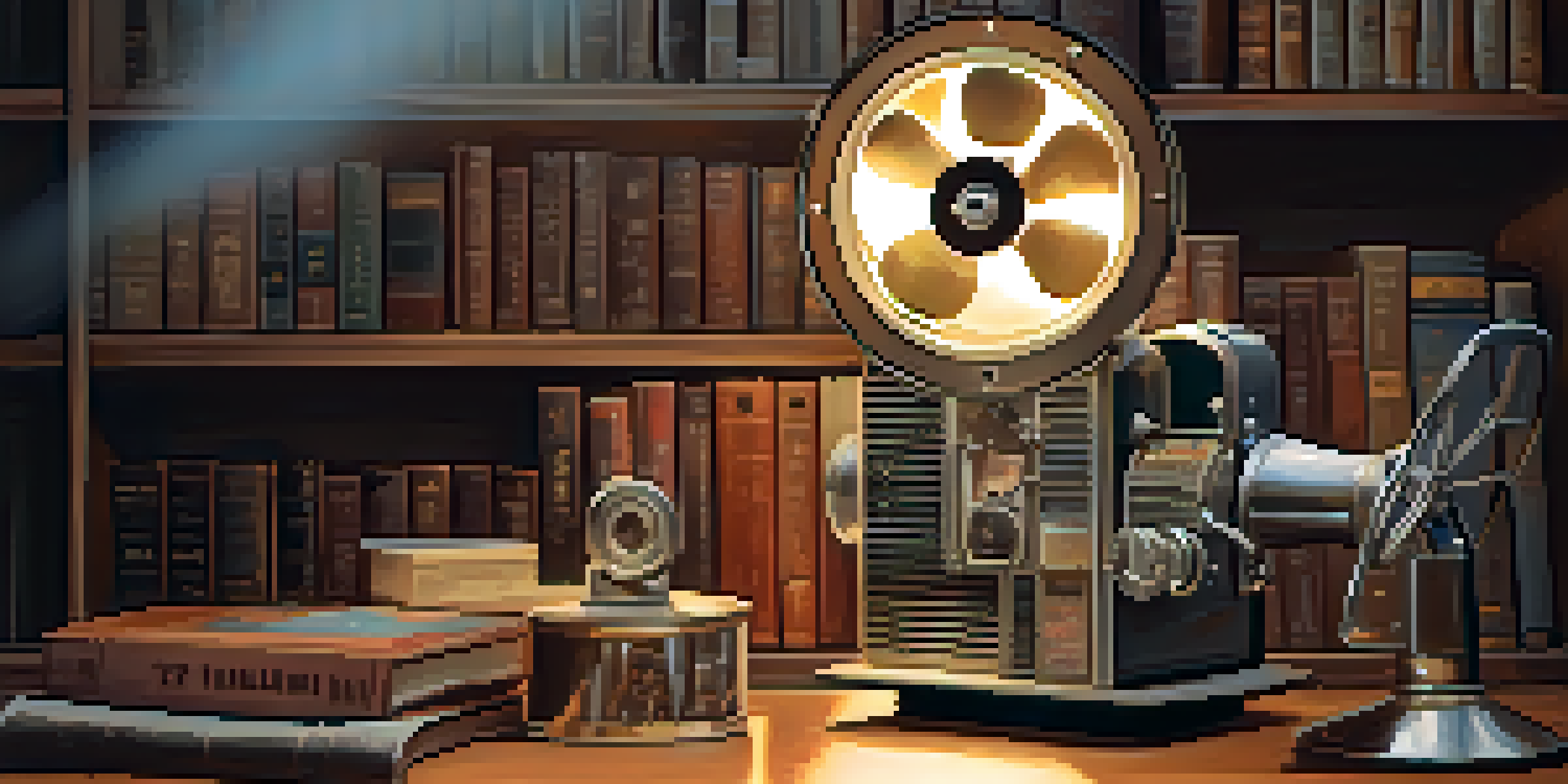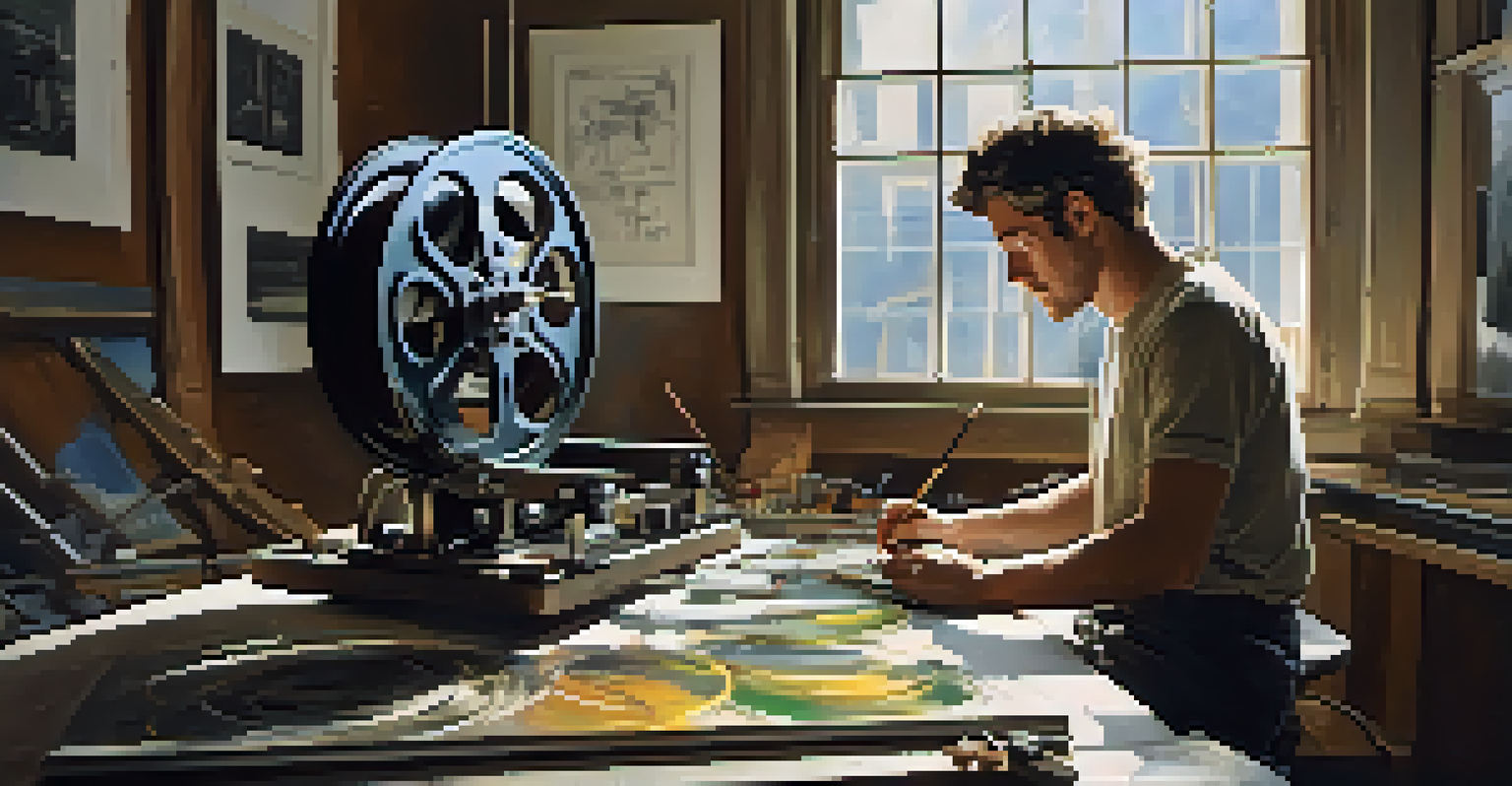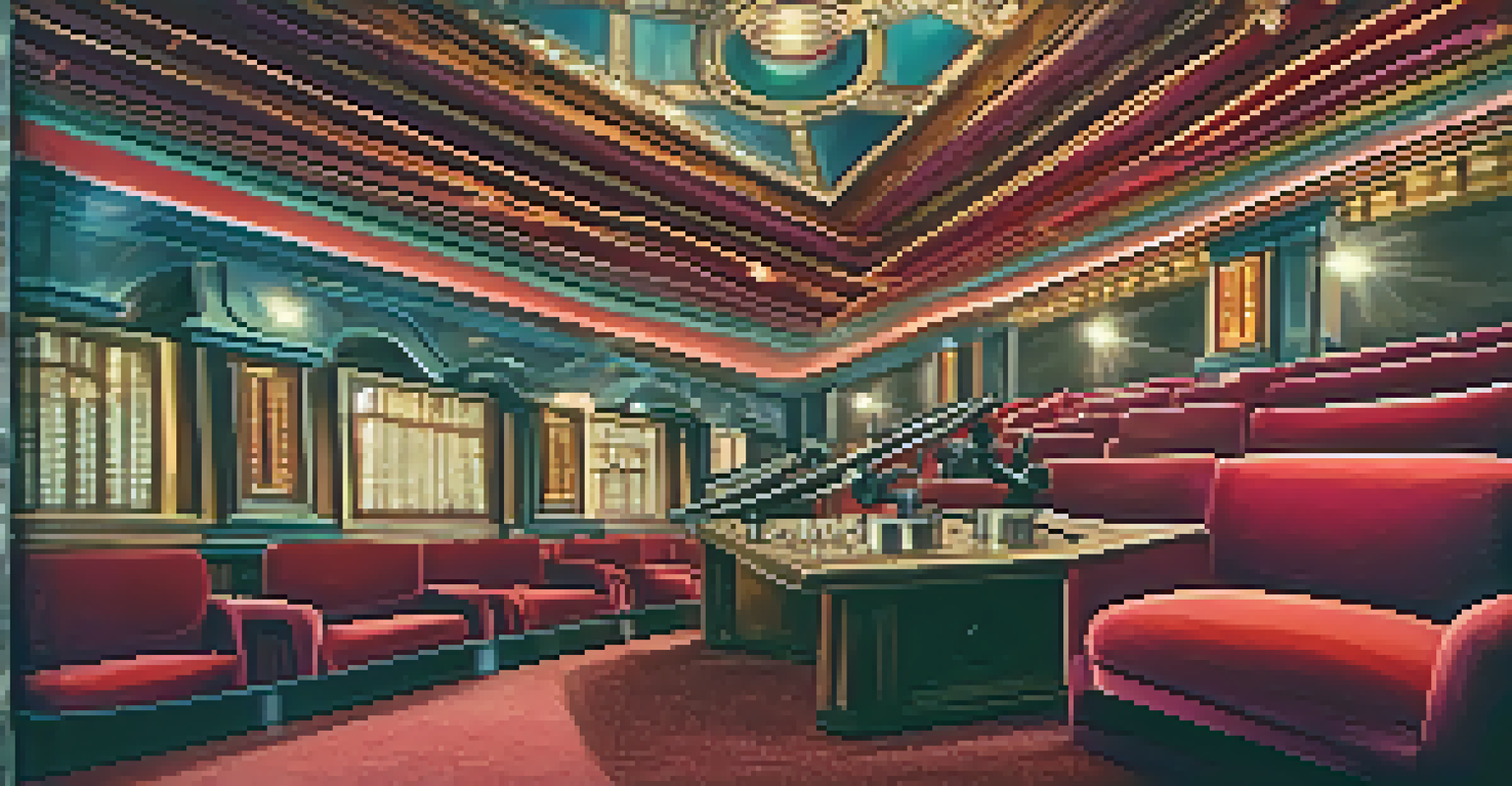Challenges Faced in Restoring Classic Films: A Discussion

Understanding the Importance of Film Restoration
Film restoration is crucial for preserving cinematic history. Just like restoring a vintage car allows us to appreciate its original beauty, restoring classic films helps us understand the artistry of past generations. These films are cultural treasures, reflecting historical contexts and artistic innovations.
Film is a very important part of our culture, and we need to protect it.
When we watch a restored classic, we’re not just viewing a movie; we’re experiencing a piece of history. It's a way to connect with the values and challenges of the time when the film was made. The emotional impact is often profound, making restoration a labor of love.
However, the road to restoration is often bumpy. It requires careful planning, expertise, and resources, which can be scarce, especially for lesser-known films. Understanding these challenges can deepen our appreciation for the restored classics we enjoy today.
Preservation vs. Restoration: What's the Difference?
While often used interchangeably, preservation and restoration serve different purposes. Preservation focuses on safeguarding original materials from decay, much like keeping a fragile book in a climate-controlled environment. Restoration, on the other hand, seeks to return a film to its original state.

This distinction is crucial for filmmakers and archivists. They must decide whether to preserve the film as it is or attempt to restore it, which could involve correcting color, sound, or visual effects. Each choice comes with its own set of challenges and considerations.
Restoration Preserves History
Film restoration is essential for preserving and connecting us to the artistry and cultural significance of classic cinema.
For instance, restoring a film can sometimes lead to debates about authenticity. Should a film be altered to match the director's original vision, or should it remain as it was released? This question often stirs passionate discussions within the film community.
The Challenges of Finding Original Materials
One of the most significant hurdles in restoring classic films is locating the original materials. Many films are stored in archives that may not have the resources to maintain them properly, leading to deterioration over time. Imagine searching for a needle in a haystack, but the needle is a single film reel buried in decades of neglect.
The past is never dead. It's not even past.
In some cases, original negatives have been lost or damaged beyond repair. This poses a dilemma: should restorers use alternative sources, like prints or copies? While these can provide valuable insights, they may lack the quality and detail needed for a successful restoration.
Moreover, the physical condition of these materials often requires extensive repair work. Restorers must be part detective and part artist, piecing together fragments of history to create a cohesive whole. This delicate balancing act is a testament to their dedication and skill.
Technological Challenges in Film Restoration
Modern technology has greatly advanced the field of film restoration, but it also presents its own challenges. For instance, digital restoration can enhance image quality, yet it may unintentionally alter the film's original aesthetic. Think of it like trying to update a classic recipe without losing its traditional flavor.
Additionally, the software used for restoration can be complex and expensive. Many smaller restoration projects may not have access to the latest tools, which can limit their ability to produce high-quality results. This creates a divide between well-funded projects and those that are struggling to get by.
Funding Is a Major Challenge
Securing funding for restoration projects can be unpredictable, often hindering the preservation of lesser-known films.
As technology continues to evolve, restorers must also keep pace with new techniques and methodologies. This requires ongoing education and adaptation, ensuring that restoration practices remain relevant and effective in the face of changing cinematic landscapes.
Funding: A Major Hurdle for Restoration Projects
Funding is often a significant barrier to restoring classic films. Many projects rely on grants, donations, or crowdfunding, which can be unpredictable. Imagine trying to fund a community project where every dollar counts; it can be both exciting and stressful.
Larger studios may have more resources, but independent films and lesser-known classics often struggle to secure the necessary funds. This can lead to delays or even cancellations of restoration projects, leaving beloved films in a state of disrepair.
Moreover, the return on investment for restoring classics can be uncertain. While some restorations lead to successful theatrical releases or home media sales, others may not receive the audience they deserve. This uncertainty can deter potential investors, creating a challenging cycle for restoration efforts.
Cultural Sensitivity in Film Restoration
Restoring classic films also involves navigating cultural sensitivities. Some films reflect outdated societal norms or attitudes that may no longer align with contemporary values. Restorers must consider how to handle these elements without erasing history.
For example, certain scenes or characters may be problematic, prompting discussions about whether to edit, annotate, or present them as they are. This decision-making process can be delicate, as it involves balancing respect for the original work with the need for modern sensibility.
Cultural Sensitivity Matters
Restorers must navigate cultural sensitivities in classic films, balancing respect for original content with contemporary values.
Engaging with diverse perspectives during restoration can enrich the process. By including voices from different backgrounds, restorers can provide a more comprehensive understanding of the film's impact and legacy, ensuring that it resonates with today's audiences.
The Role of Passion in Film Restoration
At the heart of restoration efforts lies an undeniable passion for cinema. Many restorers are filmmakers, historians, or enthusiasts who dedicate their time and skills to reviving classic films. Their love for the medium often drives them to overcome the numerous challenges they face.
This passion is evident in the meticulous work they put into every project. From repairing damaged frames to enhancing sound quality, their attention to detail is what brings these films back to life. It’s akin to an artist restoring a masterpiece, ensuring that every brushstroke is just as it should be.

Ultimately, the dedication of these individuals not only preserves the films but also fosters a deeper appreciation for their cultural significance. By sharing their passion with audiences, restorers help keep the magic of classic cinema alive for future generations.